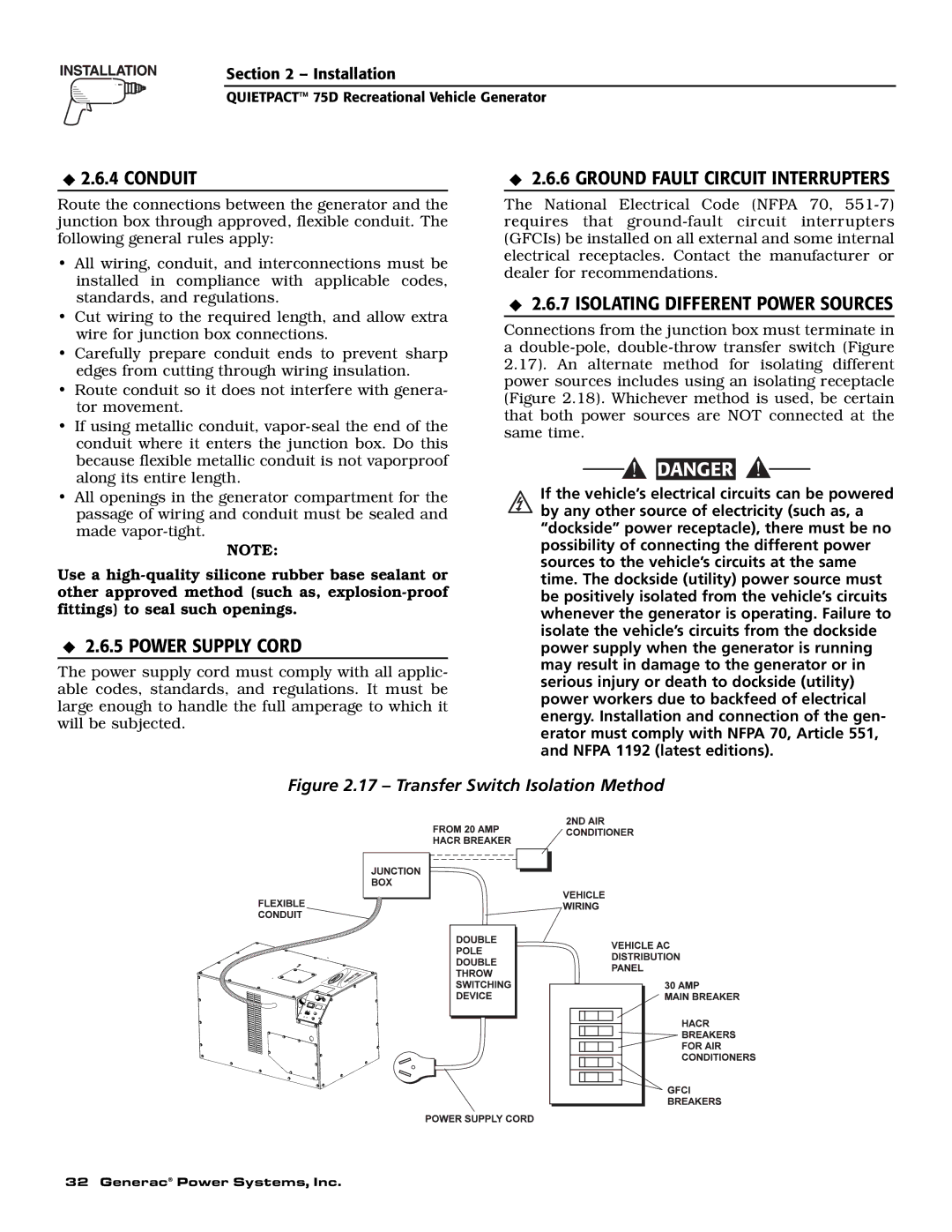
Section 2 – Installation
QUIETPACT™ 75D Recreational Vehicle Generator
◆ 2.6.4 CONDUIT |
| ◆ 2.6.6 GROUND FAULT CIRCUIT INTERRUPTERS |
Route the connections between the generator and the junction box through approved, flexible conduit. The following general rules apply:
•All wiring, conduit, and interconnections must be installed in compliance with applicable codes, standards, and regulations.
•Cut wiring to the required length, and allow extra wire for junction box connections.
•Carefully prepare conduit ends to prevent sharp edges from cutting through wiring insulation.
•Route conduit so it does not interfere with genera- tor movement.
•If using metallic conduit,
•All openings in the generator compartment for the passage of wiring and conduit must be sealed and made
NOTE:
Use a
◆2.6.5 POWER SUPPLY CORD
The power supply cord must comply with all applic- able codes, standards, and regulations. It must be large enough to handle the full amperage to which it will be subjected.
The National Electrical Code (NFPA 70,
◆2.6.7 ISOLATING DIFFERENT POWER SOURCES
Connections from the junction box must terminate in
a
![]()
![]() DANGER
DANGER
If the vehicle’s electrical circuits can be powered by any other source of electricity (such as, a “dockside” power receptacle), there must be no possibility of connecting the different power sources to the vehicle’s circuits at the same time. The dockside (utility) power source must be positively isolated from the vehicle’s circuits whenever the generator is operating. Failure to isolate the vehicle’s circuits from the dockside power supply when the generator is running may result in damage to the generator or in serious injury or death to dockside (utility) power workers due to backfeed of electrical energy. Installation and connection of the gen- erator must comply with NFPA 70, Article 551, and NFPA 1192 (latest editions).
Figure 2.17 – Transfer Switch Isolation Method
32 Generac® Power Systems, Inc.
